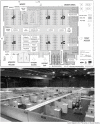Alternate Care Sites for COVID-19 Patients: Experience from the H144 Hospital of the Health Service of the Principality of Asturias, Spain
- PMID: 34612185
- PMCID: PMC8529347
- DOI: 10.1017/S1049023X21001102
Alternate Care Sites for COVID-19 Patients: Experience from the H144 Hospital of the Health Service of the Principality of Asturias, Spain
Abstract
Coronavirus disease 2019 (COVID-19) temporary hospitals, also called "alternate care sites" (ACS), as support to the health network have had uneven use. The World Health Organization (WHO) has published different recommendations in this regard. World-wide, many health services have improved their surge capacity with the implementation of new temporary hospital structures, but there have been few experiences of use over time despite representing an important element as support to the hospital network in the management of COVID-19 patients. In this article, the experiences are explained in the design, execution, and use of the temporary COVID-19 Hospital H144 of the Health Service of the Principality of Asturias (Sespa), with 144 beds, which was in operation from April 1 through July 1, 2020 (without admitting patients) and from November 12, 2020 through March 5, 2121, admitting a total of 334 COVID-19 patients (66% women; 34% men) and generating 3,149 hospital stays. Maximum occupancy was 74 patients. Mean stay was 9.42 days (MD = 3.99; [1-34]). At discharge, 126 patients (38%) went to a nursing home, 112 (33%) to their home, 40 (12%) were transferred to another hospital, and 56 (17%) died. The mean age of the admitted patients was 82.79 years (MD = 8.68; [29-104]) and was higher in women (85.09; MD = 7.57; P = .000) than in men (78.28; MD = 9.22). Some aspects to consider for future experiences of use have been: teamwork from different fields of knowledge (ie, architecture, engineering, medicine, and nursing) is essential for success; integration in the health system must be fully developed from different perspectives (ie, information system, logistics, medical records, or clinical procedures, among others); clear procedures for patient admission from different structures (ie, home, hospitals, nursing homes, or primary health care network) must combine with flexibility of use to adapt to new and unknown circumstances; and they must not compromise specialized staff availability in other health facilities.
Keywords: COVID-19; SARS-CoV-2; field hospitals; pandemic; surge capacity.
Figures





References
-
- World Health Organization. Department of Emergency and Humanitarian Action. WHO-PAHO Guidelines for the Use of Foreign Field Hospitals in the Aftermath of Sudden-Impact Disasters. 2003. https://iris.paho.org/handle/10665.2/40820. Accessed August 6, 2020.
-
- Federal Healthcare Resilience Task Force Alternate Care Site Toolkit Second Edition. https://files.asprtracie.hhs.gov/documents/acs-toolkit-ed1-20200330-1022.... Accessed April 24, 2020.
-
- Community Facilities for Preparedness and Response to COVID-19. Isolation, treatment, and step down of COVID-19 cases in community facilities: a scalable, modular, and temporary solution based on the Emergency Medical Team methodology. Emergency Medical Teams Initiative. World Health Organization; 2020. https://extranet.who.int/emt/guidelines-and-publications. Accessed August 6, 2021.
-
- Severe Acute Respiratory Infections Treatment Center. Practical manual to set up and manage a SARI treatment center and SARI screening facility in health care facilities. World Health Organization; 2020. https://extranet.who.int/emt/guidelines-and-publications. Accessed August 6, 2021.
MeSH terms
LinkOut - more resources
Full Text Sources
Medical
Miscellaneous

